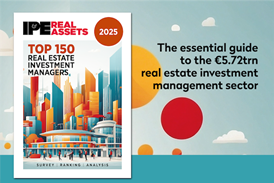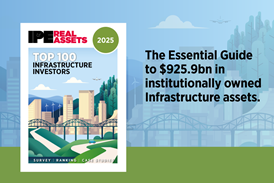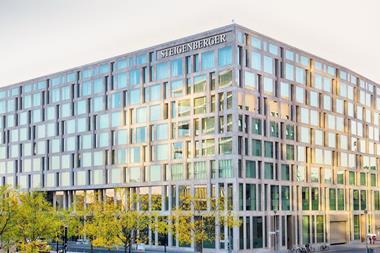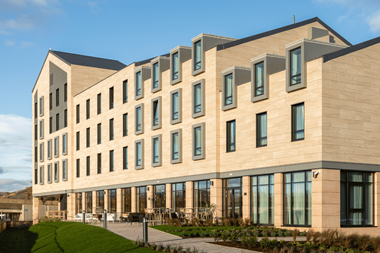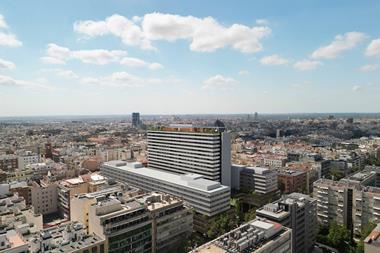The trend has been visible for several years now, but for the first time since PropertyEU’s ranking of Top Retail Developers was launched in 2007, a listed retail specialist has made it into the top spot.

Europe’s largest listed property company Unibail-Rodamco moved up two notches from last year following the opening of its mammoth Mall of Scandinavia in Stockholm in November to claim the number one position. The ranking is based on the total volume of shopping centres and extensions or redevelopments opened during a three-year period between 2013 and 2015. Other listed retail specialists or companies affiliated to quoted groups that feature prominently in the ranking include Immochan (4), Ikea Centres (7) and Klépierre (9).
Interestingly, the number of listed retail specialists that dominates our ranking in terms of pipeline is even bigger. No fewer than seven of the top 10 fall into this category with Unibail-Rodamco again heading the group.
Another trend that has become more prominent is the continued penetration of Russian and Turkish developers. Moscow-based Amma Development moved into second position this year and Russia and Turkey also continue to generate the biggest malls across Europe. The two countries accounted for no less than 17 of the largest shopping centres opened between 2013 and 2015. The only exceptions were the Mall of Scandinavia in Stockholm and Aeroville in Paris – both Unibail-Rodamco developments – and the Paradise Center in Sofia, Bulgaria.
Russia and Turkey still have a lot of catching up to do compared to many countries in Western Europe and both still have enough greenfield sites for the type of mega malls that have been opened in recent years and are still in the pipeline. Western Europe by contrast is seriously saturated in terms of retail space per 100 inhabitants and some countries like the Netherlands are set for a radical shakeout. The demise of Dutch department store chain V&D earlier this year sent shock waves through the Netherlands’ retail landscape. Some 360,000 m2 of retail space in 60 cities and towns has stood empty since February after the receivers were unable to find a buyer for the business.
These figures highlight a trend facing most mature markets in Europe and market watchers predict that retail landlords in the middle ground – somewhere between the big destination malls and local convenience centres – will be the biggest losers. Against that background, Europe’s listed retail specialists in particular are making waves with spectacular destination malls like Unibail-Rodamco’s Mall of Scandinavia which opened last year. And in contrast to the 1960s and 70s when the first American-style shopping centres opened their doors on the periphery of a city, the new retail icons are being developed right in the heart of some of the most densely populated urban areas in Europe.
‘Shopping centres are coming back into the city,’ Pascal Barboni, director of development at Unibail Rodamco, recently told PropertyEU.
Take the company’s largest pipeline project, the Mall of Europe in Brussels. This mammoth development in Brussels is aimed at revitalising a long-neglected part of the Belgian capital, Barboni said. ‘This part of the city lacks coherence, but it is a real district of Brussels. It has a mixed history as an urban centre with residential, the Atomium, and the current congress activities…Five million people visit the area every year. It’s a real part of the city.’
Wounded heart of paris is restored
In early April, the mayor of Paris lauded Unibail-Rodamco’s new extension of Forum des Halles in Paris, saying ‘the wounded heart of Paris has been restored’. The undulating roof of glass and yellow steel covers two new retail wings and incorporates 7,000 tonnes of steel, only 500 tonnes less than the Eiffel Tower. The costs of the revamp are put at over €900 mln, almost three times the original estimate 10 years ago, but Hidalgo is confident that the renovation of the underground shopping centre and metro station will breathe new life into the heart of French capital.
Unibail-Rodamco is now planning a similar feat in Brussels. After winning the Neo Brussels competition in 2014 together with local partners Besix and CFE, the Unibail-Rodamco-led consortium received a pre-building permit for the Mall of Europe in September last year. Completion of the project is not expected until after 2020-21, Barboni said. ‘This is a long development project involving €800 mln worth of residential and retail.’ The support of the authorities is key, he says. ‘Retail is changing long-term, it has become very complex. We are trying to create a new district with a combination of a lot of projects including a hotel. It’s the first time for us that we are combining all these different functions.’
The Mall of Europe is one of several large developments in Unibail-Rodamco’s pipeline. In addition to creating an icon, the Franco-Dutch retail specialist is also seeking to build a super-connected destination, Barboni said. ‘What’s important to create is density, synergy and hyper-connectivity within the city. This project is not near the capital but in it. We need to modify the shopping centre atmosphere and turn it into a real destination, 24/7. What we’re aiming to do is create an experience and emotion for local residents, citizens, shoppers and tourists in a very efficient environment. This mall will be a centre of retail density within Brussels that will help promote the attractiveness of the city.’
Another element that Unibail-Rodamco aims to inject into the Brussels mall is art arts and culture, drawing on its experiences with Polygone Riviera in Nice which was also opened in 2015. Modern shopping malls need to provide a complementary offer to ecommerce by combining the bricks and mortar with experience, Barboni said. ‘This is all part of the evolution of retail. Shopping centres without an emotional element don’t have a future.’
